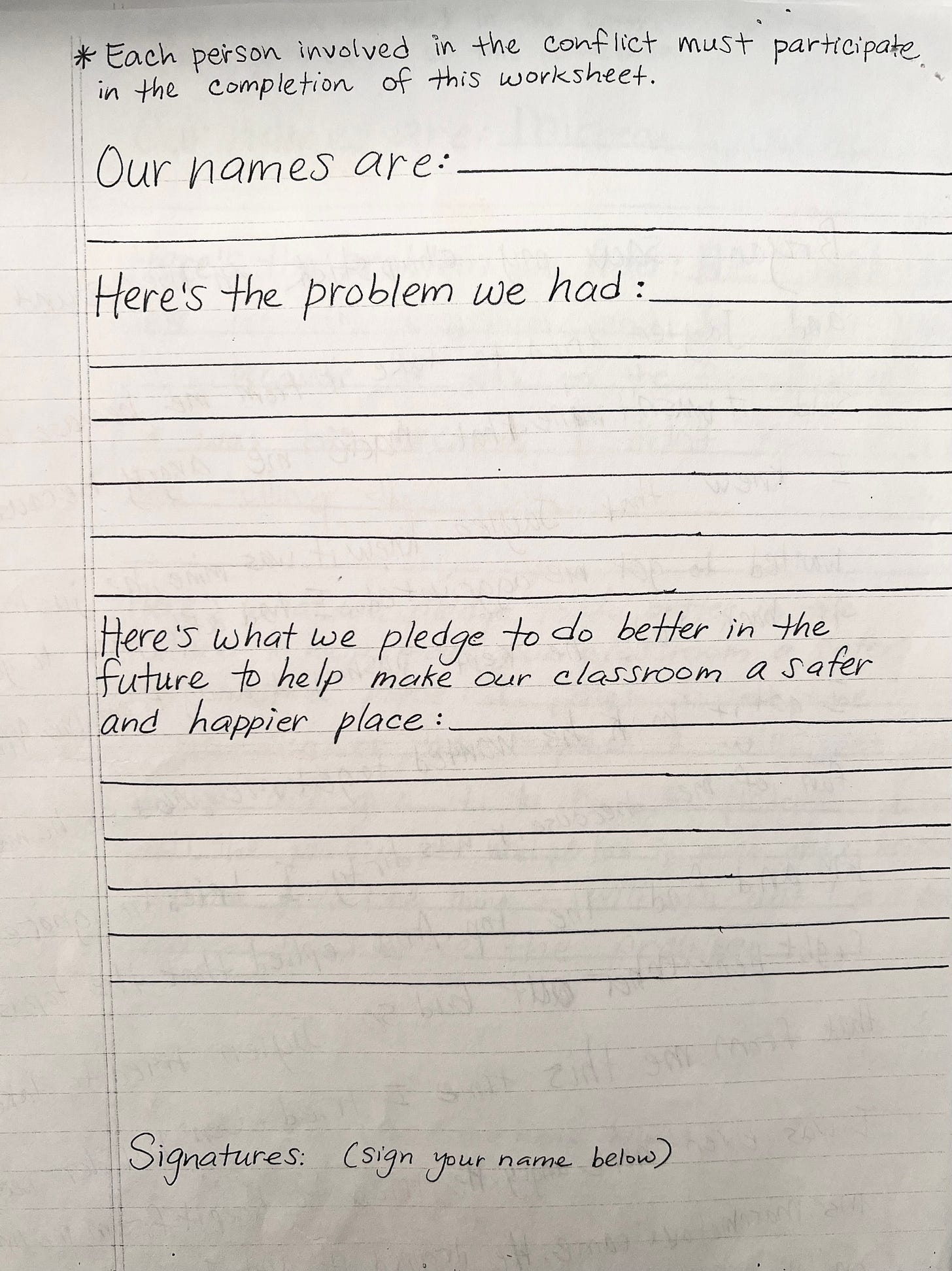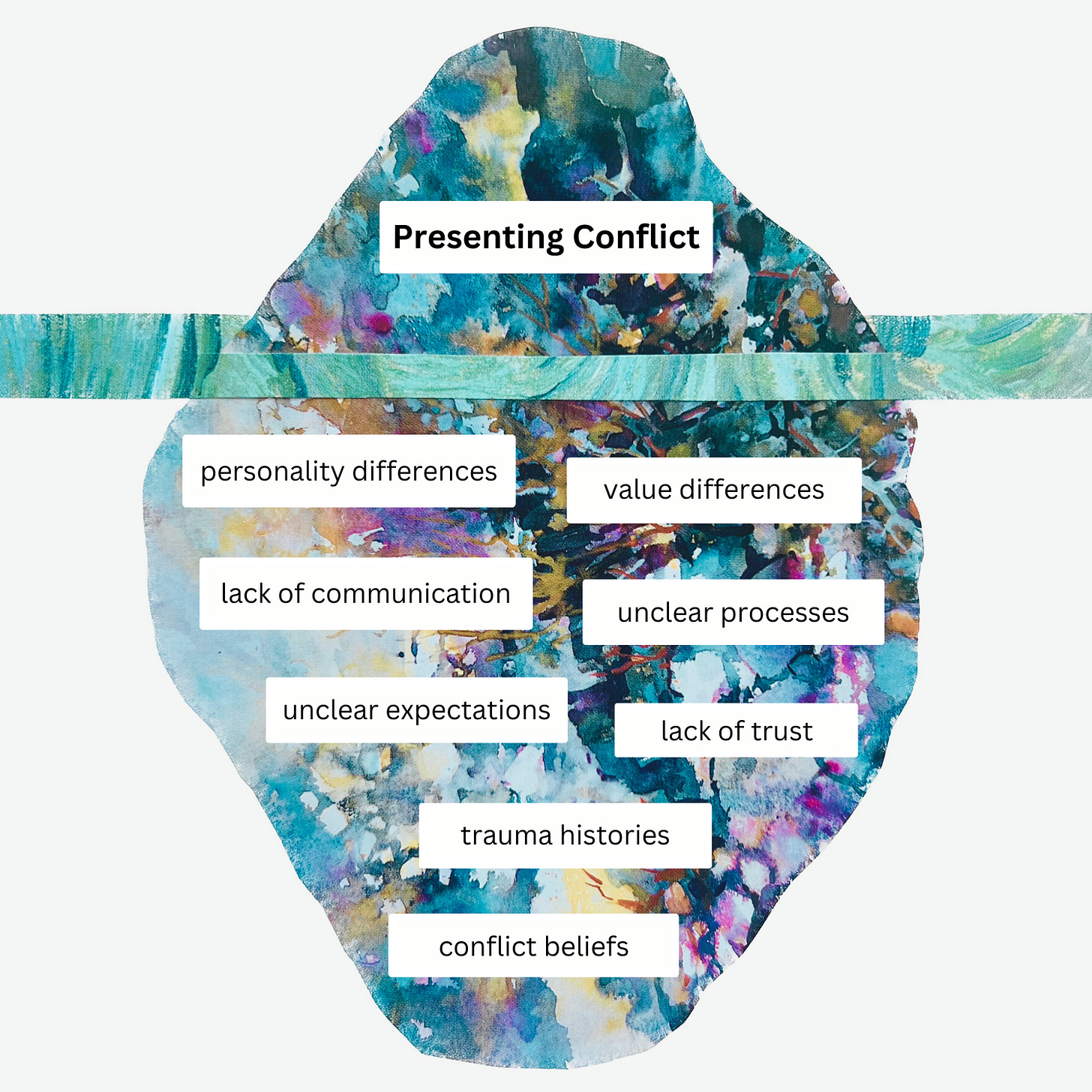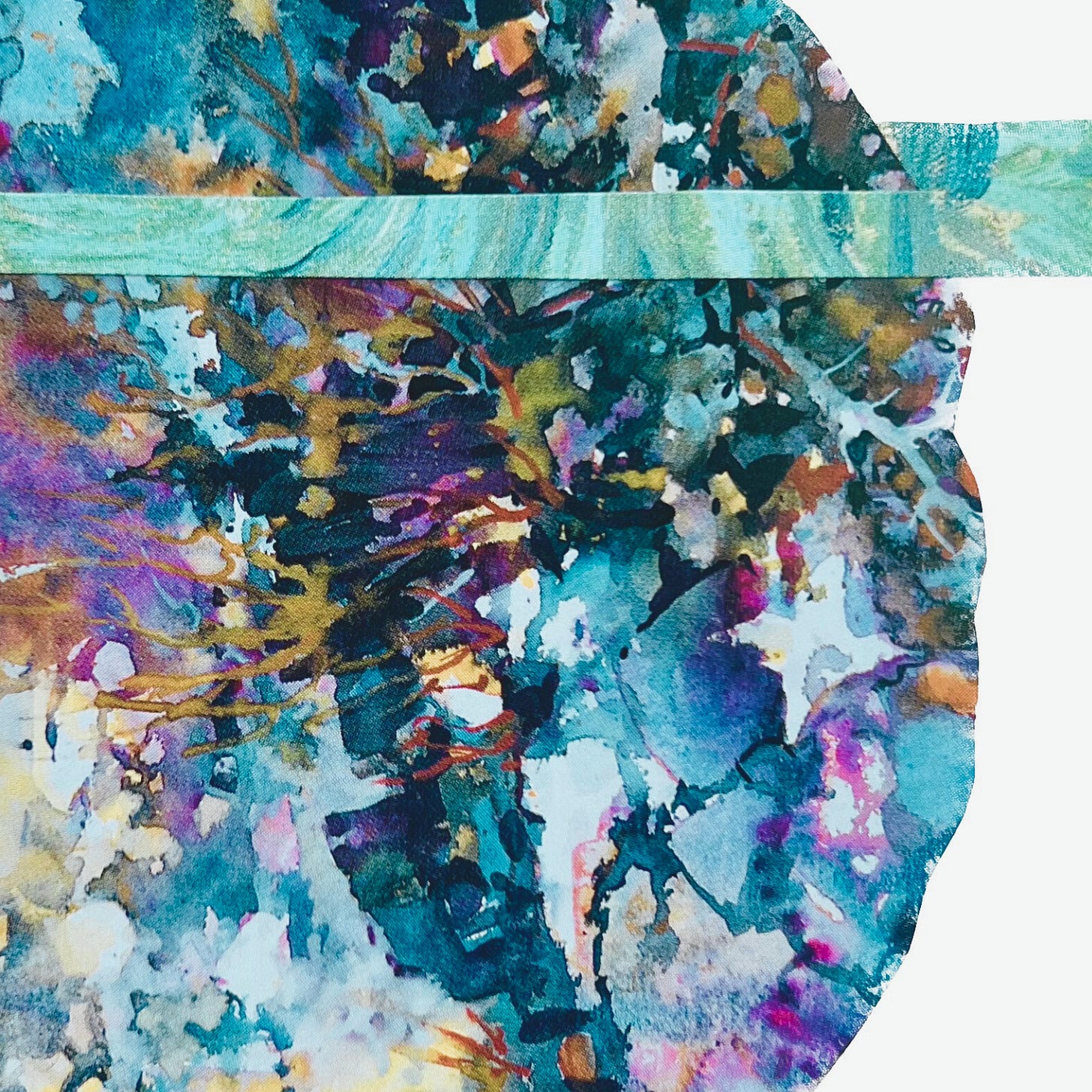When I was a teacher, conflicts between classmates were a routine part of the job. And aside from standard classroom management practices, I didn't find much training or support for navigating that aspect of the work.
So, I got creative.
I set up a “peace table” in the back of the classroom where students went when there was a conflict. I created a simple, handwritten worksheet to help them process the conflict and I led conflict resolution conversations.
It wasn't perfect and felt like a drop in the bucket, but it also felt needed.
When I left teaching and began working with adults, I thought dealing with conflict would be less of an issue. As it turned out, conflict was an issue for adults, too. And there was little support for that part of the job, still.
Again, I got creative. And this time, I got curious.
I consumed books, articles, and documentaries on conflict. I attended a multi-day mediation training. I was motivated to learn what I could about conflict to become a better manager and leader.
Over time, I became the go-to person in my organization for facilitating conflict resolution conversations. Many colleagues recognized me as someone who kept my cool, didn’t rush to judgment and could take different perspectives. I developed processes, handouts and guidelines for dealing with conflict. I led workshops on building positive conflict cultures, internally and for outside organizations.
I worked to model positive conflict behaviors. I participated in conflict resolution conversations. When feeling frustrated with someone, I took time to reflect and write down questions I had for them. I went to therapy, which helped me change how I handled conflict in my personal relationships.
All of these experiences have shaped my views on conflict and my approaches to conflict, and these days I’m still providing support for teams dealing with conflict. Little did I know, when I created that Peace Table, that I’d still be doing conflict-related work so many years later. Looking back now, I see that rudimentary worksheet as the genesis of my professional conflict work spanning nearly two decades and counting.
Portal of Transformation
In addition to my interest in conflict, I’m a sucker for renovation shows. I enjoy the physical transformation of a living space–whether in real life or on TV. Culture change and paint color change are connected in my mind: both are ways we alter environments to enhance enjoyment and improve well-being.
Sure, one is more surface-level than the other, but as someone with sensory sensitivities, my physical environment affects how I feel and is important to me. I frequently redecorate and reorganize my home, mostly in small ways: move this bookshelf to a different spot, move the wall art around, organize this closet to make it easier to use. I pay attention to what doesn’t look or feel good and I take action to remedy it.
I’m not big into astrology, but a few years ago, a friend gifted me a birth chart guide. My rising sign is Scorpio, and about this, the guide states:
“Scorpio often acts like a portal of transformation for others. Because it is comfortable with discomfort, Scorpio isn’t afraid of the process of change.”
Did someone install a window into my soul?
It’s not entirely accurate that I’m comfortable with discomfort. I just tend to be made more uncomfortable by avoiding problems than addressing them. As you might imagine, this puts me in conflict with others sometimes.
Long ago, a friend helped me see that not everyone would be down with how I challenged them to grow, but that the people who appreciate that about me are my people. I carry that lesson with me in my personal and professional worlds. In friends and clients, I appreciate the process of learning and evolving together.
The Conflict Iceberg
While I prefer to focus on the superficial parts of my home, things below the surface need attention, too. Leaky pipes, electrical problems, termites, mold: all sorts of things under the surface in a house can require our attention and put us at risk. And of course, problems can emerge on the surface at the most inconvenient times. We have a million things on our metaphorical plate and then the dishwasher breaks.
This is similar to how conflict shows up in relationships and organizations. Maybe there’s chronic tension that we grow accustomed to, hoping it will resolve on its own—then it escalates. Maybe, seemingly out of the blue, an argument erupts. When tensions and conflict show up at the surface, something has usually been brewing under the surface until it’s set off.
Do an online search of the term “conflict iceberg” and it will return countless variations on this theme. The visual depicts a “presenting conflict” on the part of the iceberg above the water’s surface, with various hidden causes and contributing factors underneath.
In their book Resolving Conflicts at Work, Kenneth Cloke and Joan Goldsmith write:
“The deeper sources of conflict at work are chronic disputes that repeat themselves in various guises, but never fully disappear. The causes of these disputes often have little or nothing to do with the petty, superficial issues people commonly fight over, but go much deeper into the structures, systems, processes, and relationships in the workplace; the nature of conflict, the culture of conflict within organizations, and the ways work is organized, compensated, processed, and acknowledged.”
To truly resolve conflict requires looking beyond the presenting issue and diving underneath the surface to see what else is going on.
Remodeling Conflict Approaches
How we view and respond to conflict at work is part of workplace culture, but this aspect of culture is commonly undefined.
In the absence of intentional culture-building around conflict, members of an organization bring a variety of learned approaches to it, including domination, avoidance, and everything in between.
There are countless models of destructive conflict depicted in the media, the world and our families. Most of the time, our cultural norms don’t support approaches to conflict that lead to resolution and relationship-building. We’re often not raised with the tools or resources to deal with conflict in a productive way. I speak from experience, as someone who was raised in part around toxic conflict.
It’s common to view conflict as a threat—as something that will only result in destruction and a lack of safety. Even for those of us trained in conflict mediation and resolution, our initial response when faced with conflict may be one of stress and fear. That’s the case for me and I have to intentionally practice responding to conflict in ways that align with my values.
And because of this, I’ve seen conflict be constructive. I’ve supported people through difficult conversations that they thought would make things worse but ended up bringing relief. I’ve navigated conflict in personal relationships that feels unpleasant and uncomfortable but leads to a better place. I’ve championed proactive communication to enhance relationships and collaboration.
Conflict is an opportunity, and how we show up to it makes a difference. When handled with care and with the right support, conflict is an opportunity to strengthen relationships and build trust.
All of this is to say: traditional approaches to conflict are in need of a remodel.
We can shore up the foundation by accepting that conflict occurs and consciously approaching it as an opportunity rather than a threat.
We can clear out avoidance, assumptions and resentment and build in curiosity, reflection, and healthy communication.
In relationships and organizations, some amount of conflict is inevitable, but how we approach and handle it is up to us—and shaped by workplace norms and expectations. When conflicts arise, we can’t slap on a new coat of paint and call it a day. We need to get under the surface to identify the real issue and work together to fix it.
If we’re open to it, conflict can be a portal of positive transformation.
I support organizations and teams in handling conflict, improving communication and collaboration, and building intentional conflict cultures. Visit my website or schedule a free consultation to learn more.
Last month’s webinar, “Managing for Mental Health: Turning Awareness into Action” is available for viewing for a limited time. Check it out here.







